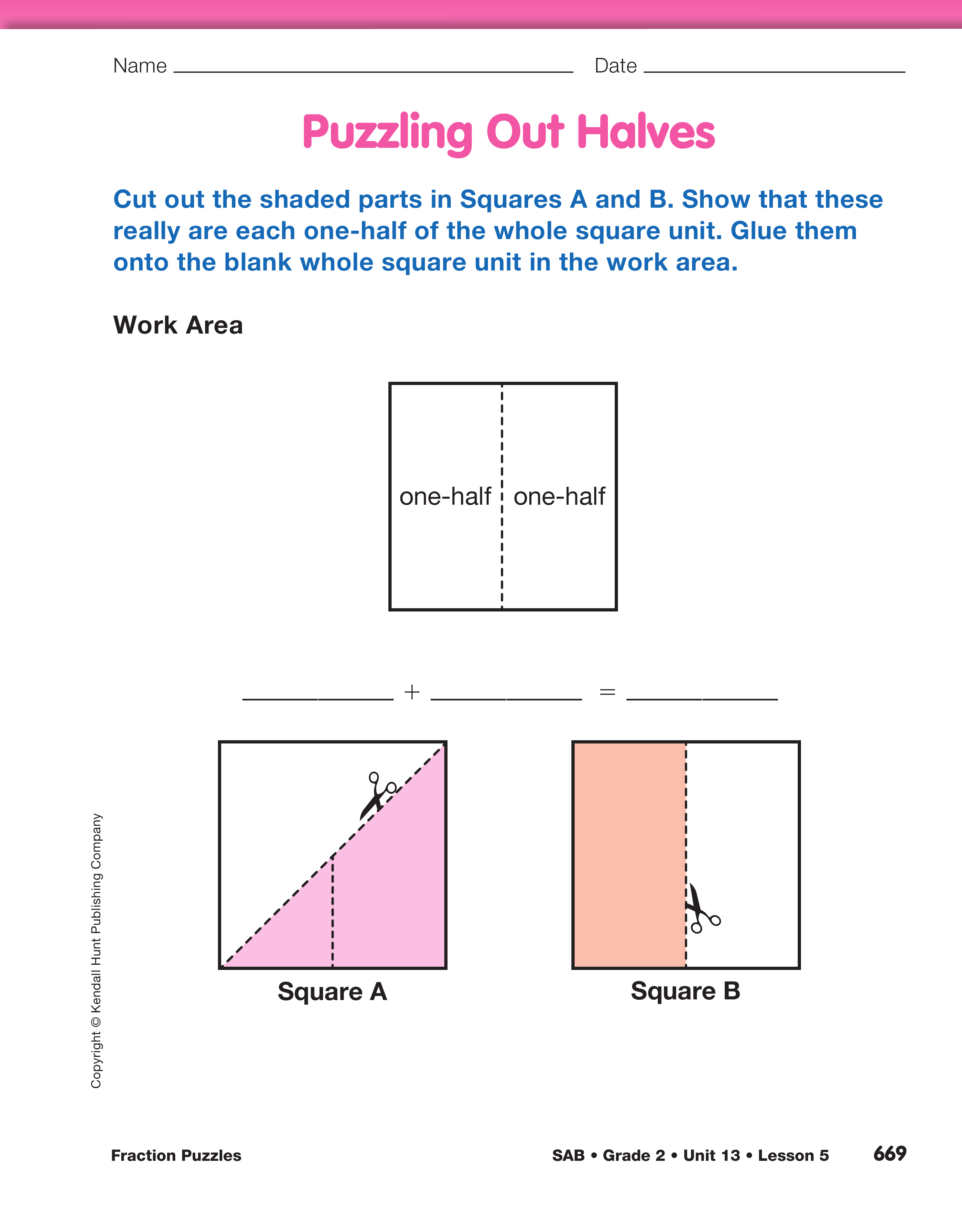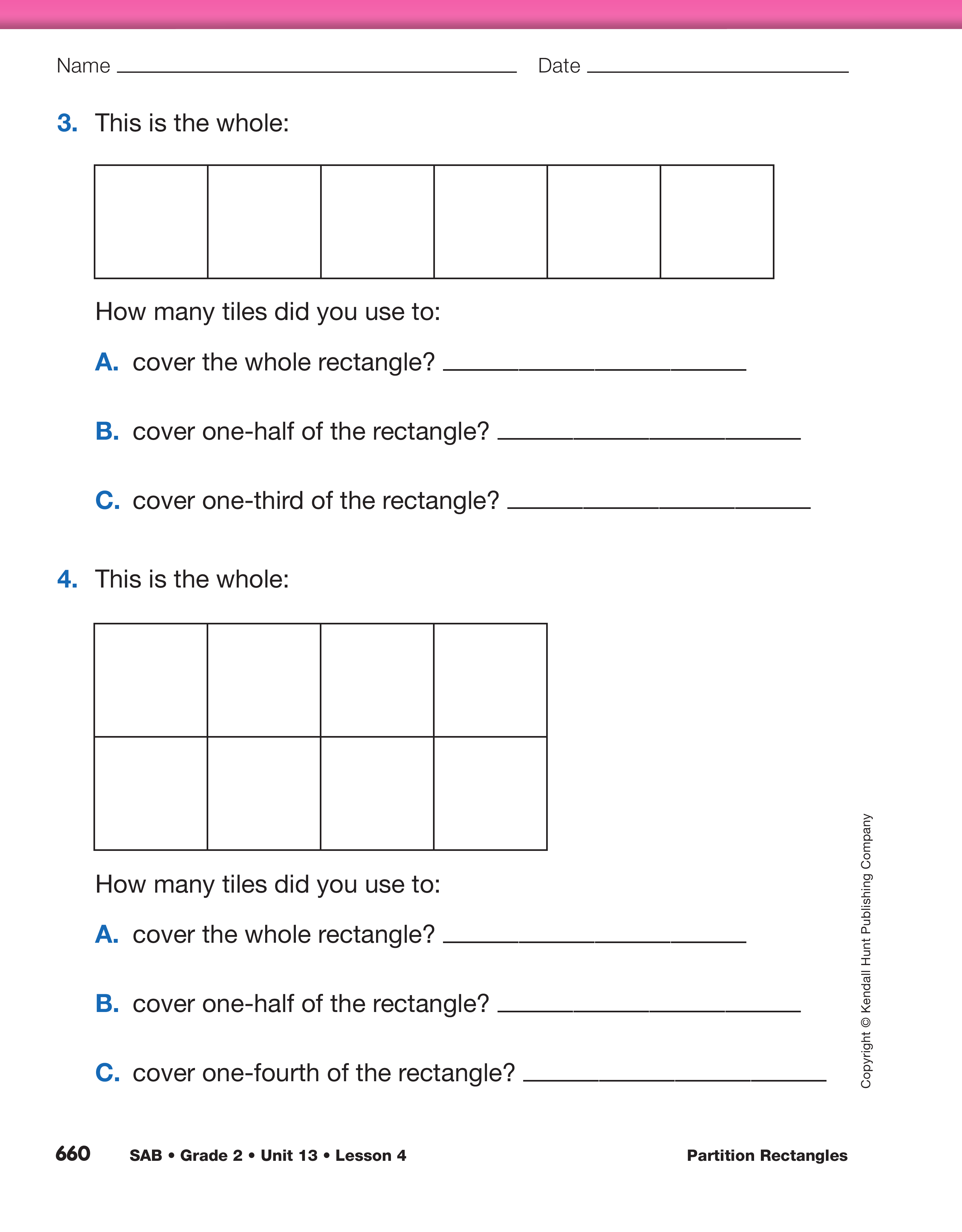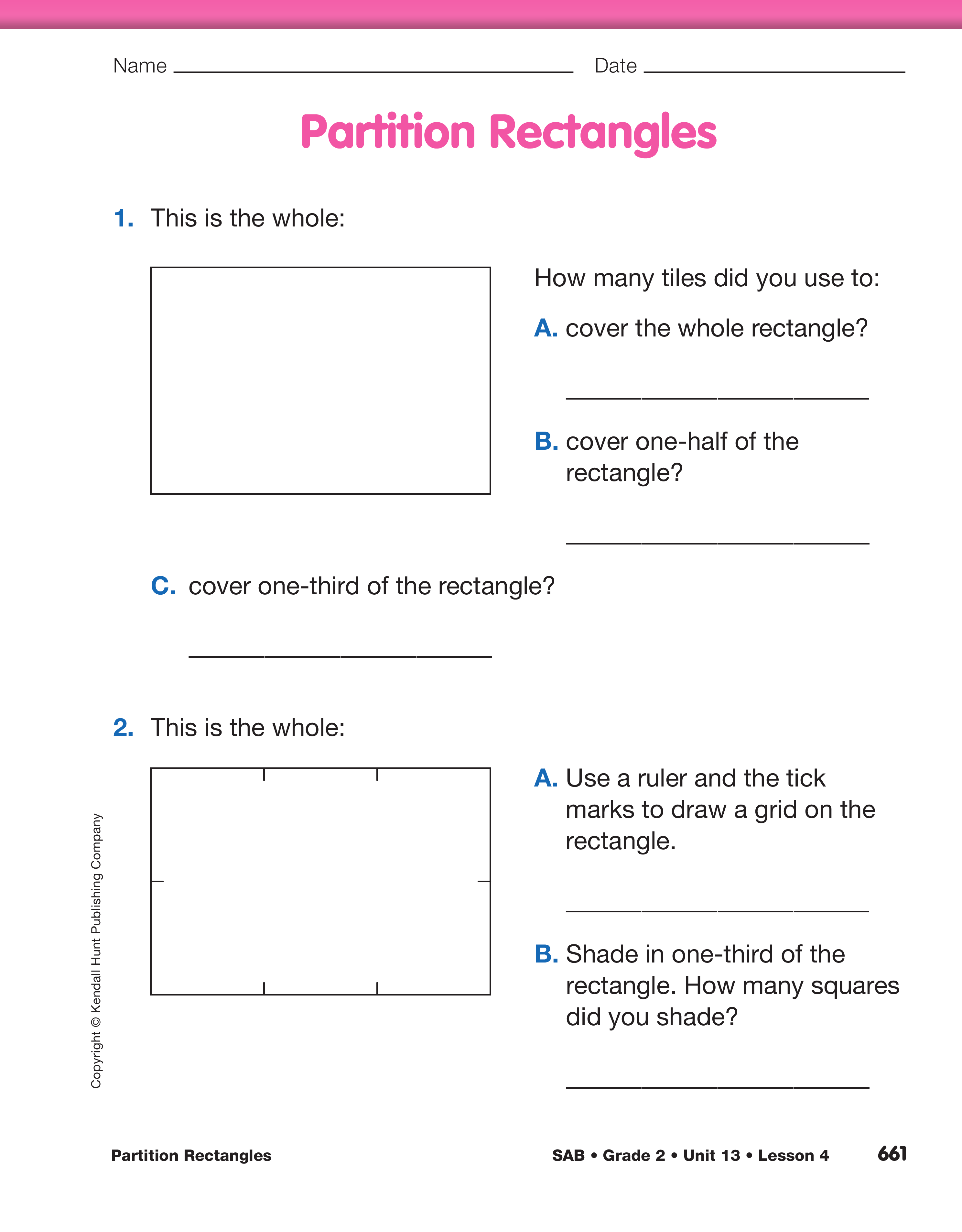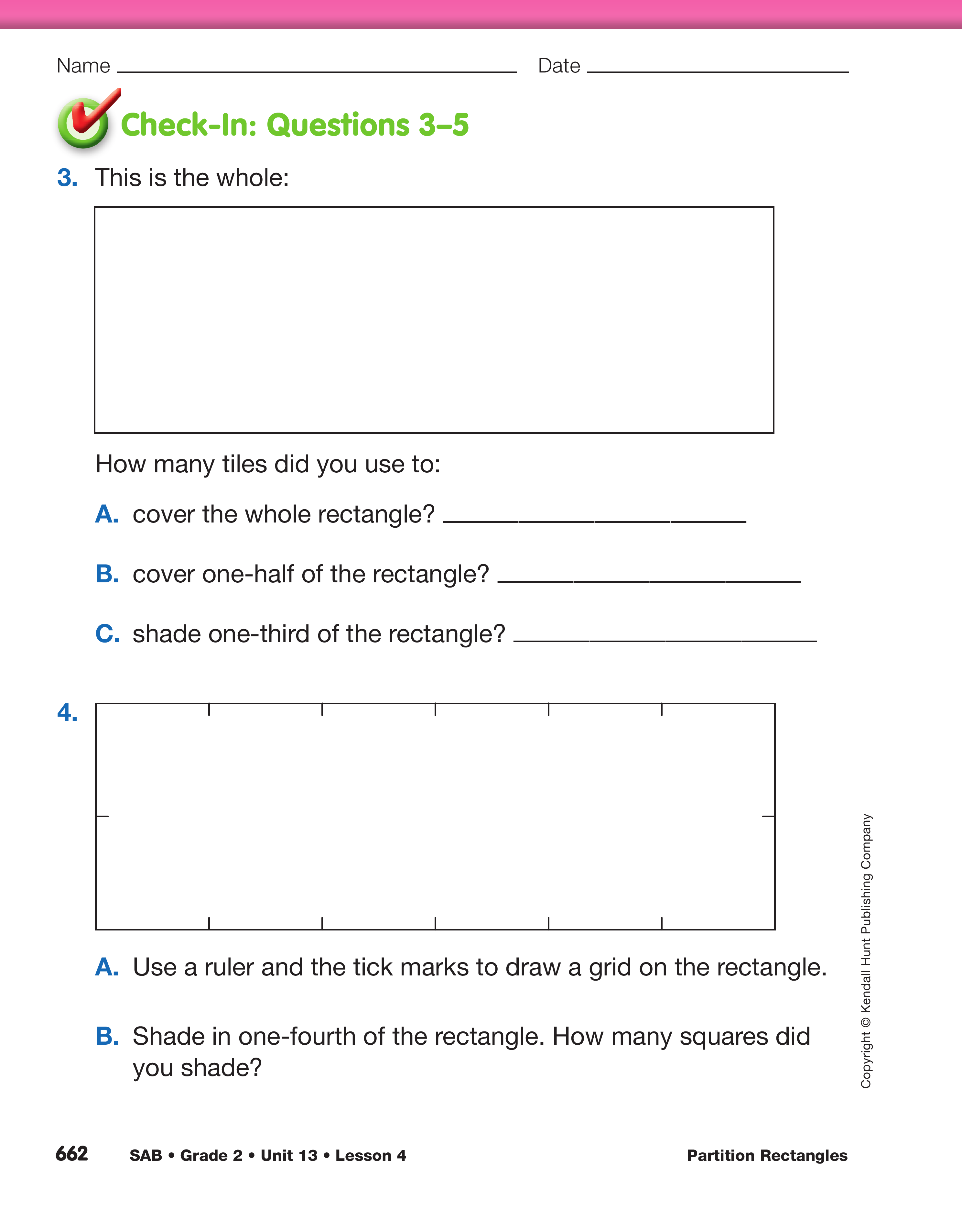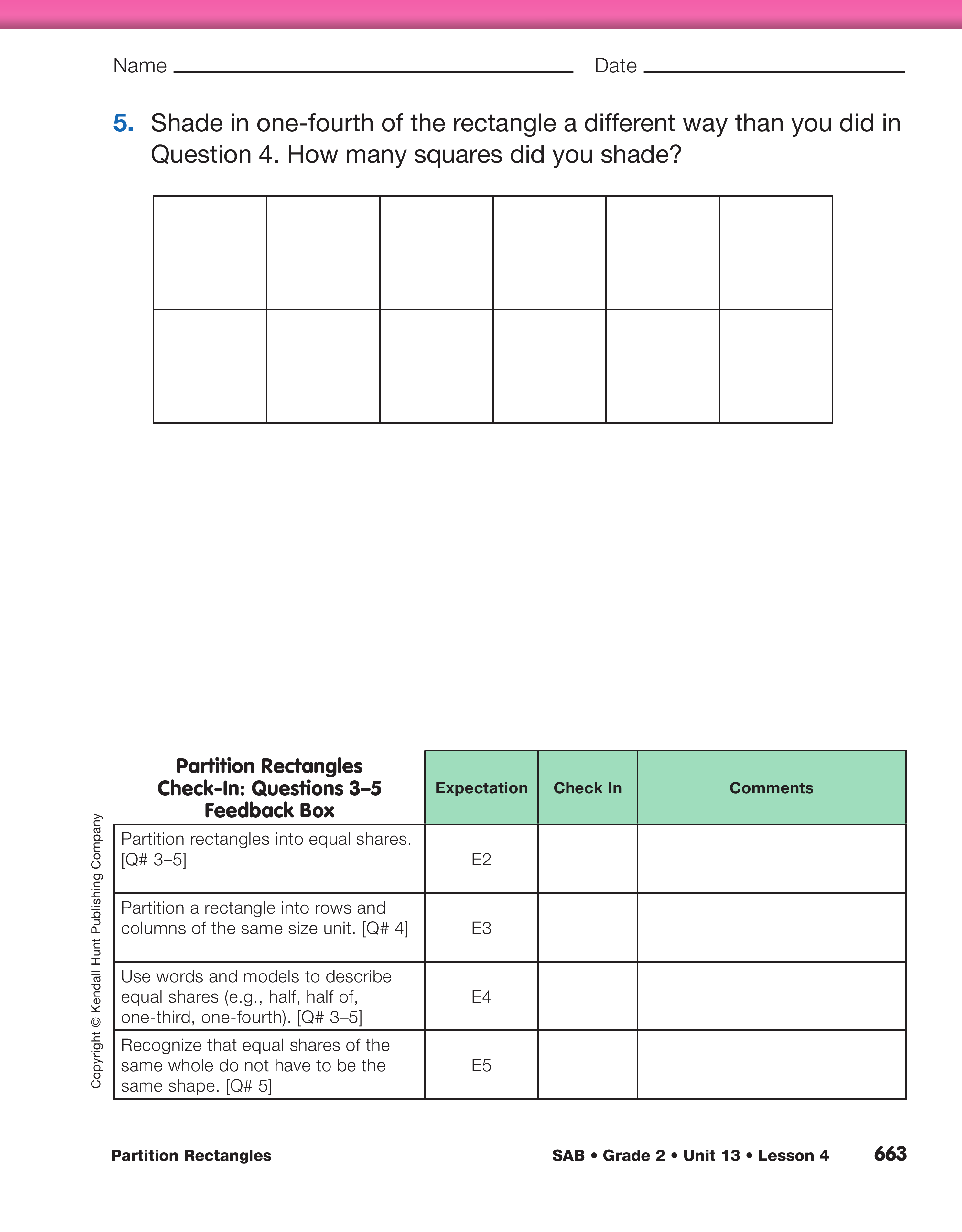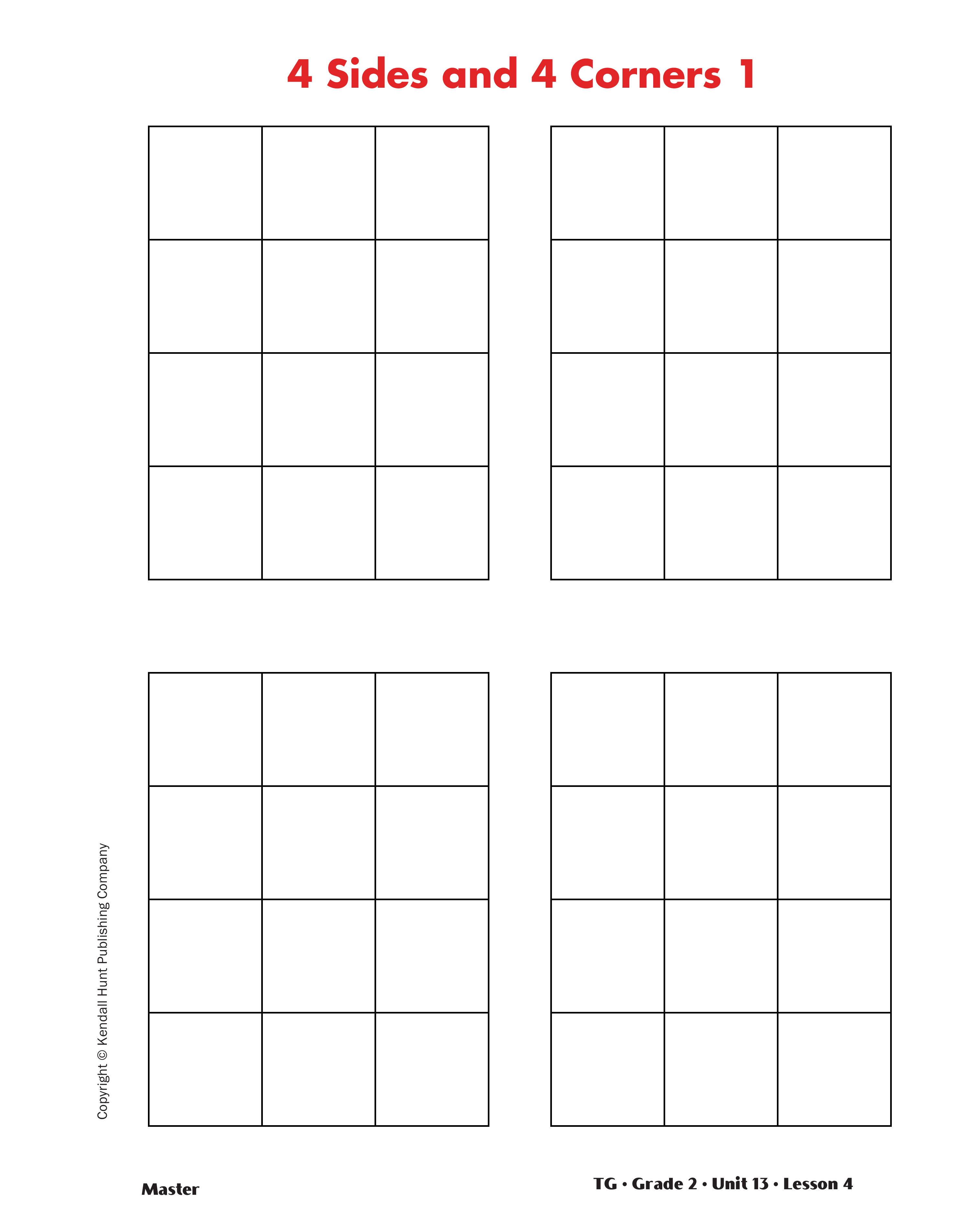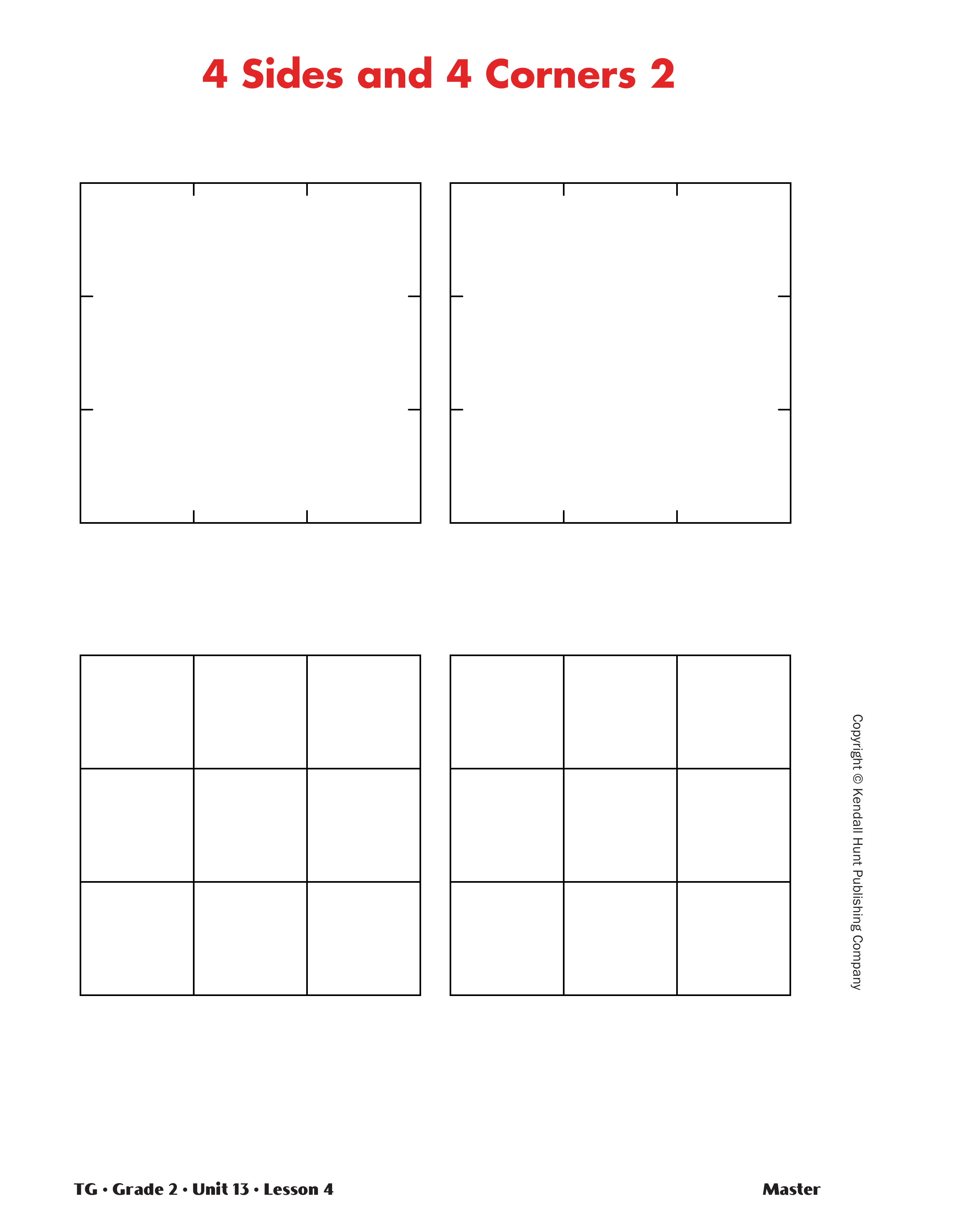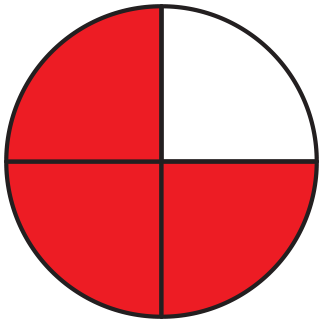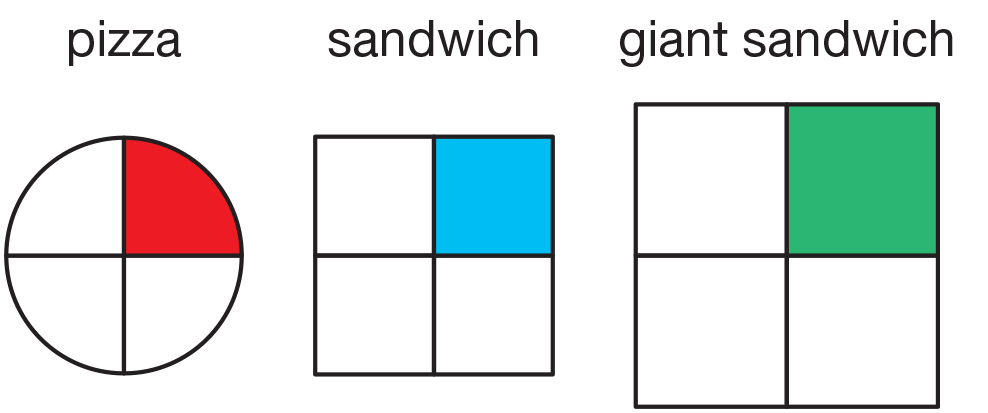Display the Puzzling Out Halves page in the Student
Activity Book. Tell students that the square is one
whole unit.
- What do you notice about Square A and Square B? (Possible response: The shaded part of Square A
is a triangle and the shaded part of Square B is a
rectangle.)
- What part of Square A is shaded? Why do you
think so? (one-half; Possible response: If I cut
out Square A and fold it on the line, both sides
match. That means there are two equal parts.)
- Have you seen halves that look like that before?
Where? (Possible response: Sometimes my dad
cuts my sandwich in half like that.)
- Do you think the unshaded part is the same size
as the shaded part? Why? (Possible response:
Yes, because if you fold it, the two parts match.)
- Is the unshaded part also one-half? (yes)
- What part of Square B is shaded? Why do you
think so? (one-half; Possible response: It is the
same as A except you fold it differently.)
- Are the shaded and unshaded parts in Square B
both one-half? Why do you think so? (Yes; both
sides cover the same amount of area.)
Instruct students to cut out the shapes and glue them
onto the whole square unit in the Work Area on the
Puzzling Out Halves page. Give students time to
solve the problem on their own.
Upon completion, ask a student volunteer to display
his or her solution. If necessary, model the solution
by cutting out the shaded parts on your copy of the
Puzzling Out Halves page and fitting the two pieces
together. Students will see that both the shapes on
the top of the page are exactly half of the whole
square unit.













